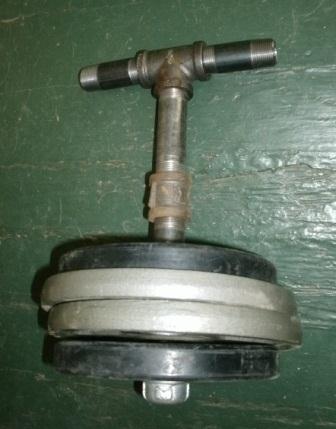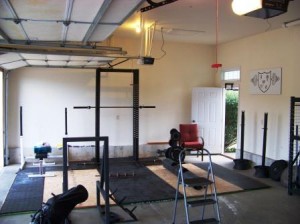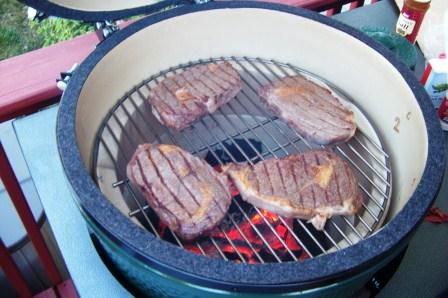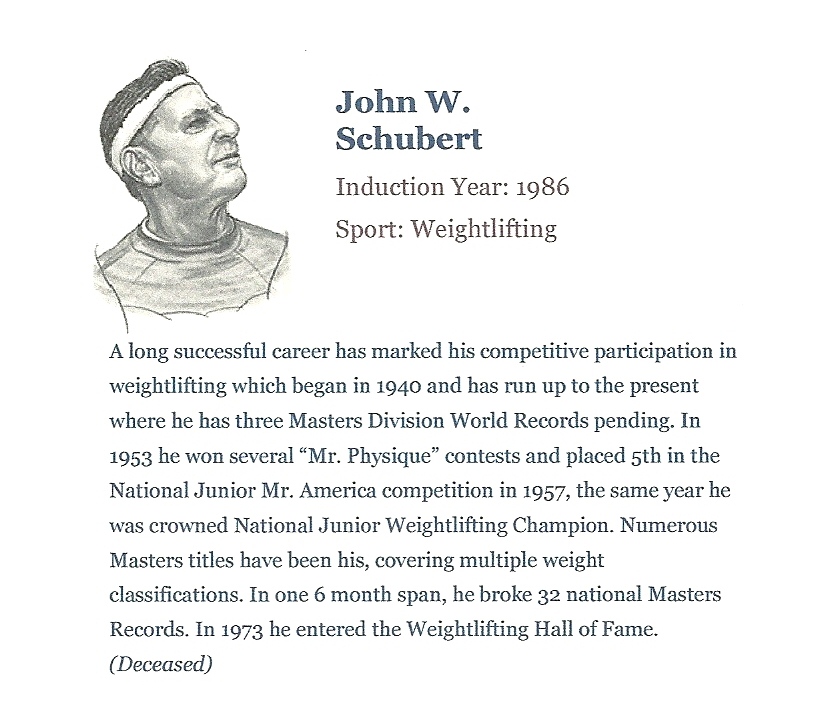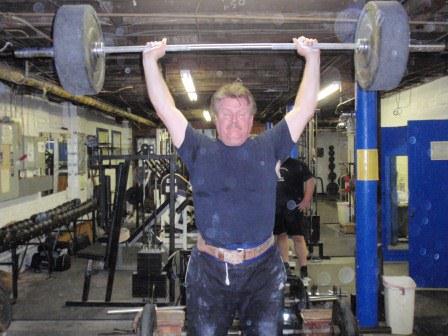by Larry Traub
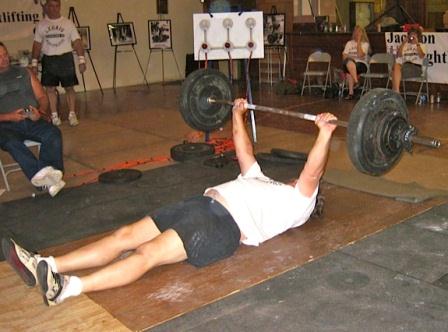
Dave Glasgow performing a Pullover and Push at the 2011 USAWA National Championships. Larry Traub is in the background to the left "looking on". (photo and caption by webmaster)
The last two emails I received from Dave Glasgow who has been my lifting partner for the last 40 years, (even though we now live 800 miles apart) went like this. The first one just encouraged me to start submitting some articles that could be used on the USAWA website. The second one went exactly like this except for some expletives deleted. (Only one, which is pretty good for Dave.)
“I was thinking last evening (yeah, laugh, ************). I am doing the 5/3/1 deal and it struck me. I know that you are a fan of the 7 rep system which got me wondering……
Take a weigh that you know you can’t get 7 reps with. Do however many sets it takes to get 7 reps. Example
Set 1… 2 reps, Set 2…2 reps, Set3 … 1rep, Set4…1 rep, Set5…1 rep. OR
Set 1… 3 reps, Set 2…2 reps, Set3 … 2rep. OR
Set 1… 4 reps, Set 2…3 reps. OR
Set 1… 6 reps, Set 2…1 rep. OR
You see where I am going. As you get stronger, the intensity increases but the volume ALWAYS remains the same. So I think you have a built in safety net of not actually doing the same workout twice. When you can do one set of seven, that’s it for the day. You add weight the next workout and start over.
Thoughts??”
Well I did think about it and decided to use Dave’s idea as fodder for my article. First you need to realize how hard it is for Dave to take training advice from me. So, even though he took a principal that I used and altered it beyond recognition before he considered using it, it is still a big step for him. First, I’m not stuck on seven reps as being a magic number. What I’m really doing is focusing on the development of the type 2B muscle fibers, which get maximum stimulation for growth when failure of an exercise is reached somewhere around the 7 to 10 rep range. There are 3 types of fibers. First, the slow twitch type 1 muscle fibers which are stimulated by endurance activity and have no real ability for growth. These have no real value for a weightlifter and too much endurance activity will result in the loss of our all important fast twitch fibers. The second type is the type 2A fiber which is the fast twitch fiber that is geared towards a little more endurance and is stimulated when failure of an exercise is reached somewhere in the 12 -20 rep range. This has some limited potential for growth. It appears that it’s potential for growth is greatly increased with anabolic drugs so if you read articles about bodybuilders getting great results with high reps you need to consider the possibility of drugs being involved. The last of course is the 2B muscle fibers which are the fibers that have maximum growth potential for the bodybuilders, and maximum potential for explosive movement which is probably a focus for most every athlete except the extreme endurance athlete.
I am first and foremost a powerlifter, so what I’ve done is taken the squat bench and deadlift and focused on 7 reps as my goal for a particular workout in those lifts. I am staying in the low end of the 7-10 rep range because these are the lifts I will compete in and I want to work with as heavy a weight as possible while stimulating the type 2B fibers. For most of the other “assistance” exercises in my workout I use a 10 rep goal because I am generally not concerned about my max on these. This makes sense on another front also because it’s not really how many reps you do. It’s more about reaching failure in a certain amount of time. I believe that doing a rep on squat, bench or deadlift will generally take longer than completing a rep on one of my assistance exercises. For instance it seems reasonable that the time elapsed in doing a set of 7 in the squat might be the same or greater than doing a set of 10 on my hyperextension machine.
The late, great, West Virginia heavyweight , Luke Iams has often been quoted as saying, “Anything over 6 reps is bodybuilding.” I might agree, but would have to ask, why is that a bad thing? Bodybuilding does not imply that you have to shave your body and get out the Speedos. It just means that you are concerned with building muscle size which is directly proportional to strength. My personal experiences with competitive bodybuilding some 30 years ago has made me conscious of training the whole body and maintaining a balanced physique while training at a bodyweight where I am fairly lean. I think this emphasis has aided me in my powerlifting. It has also, absolutely, been a plus in my latest ventures in USAWA, where eventually every muscle in the body is tested and the bodyweight formula rewards a lean muscular body.
Of course there is always the concern that the person who focuses on bodybuilding will become narcissistic and egotistical. Was that a problem in my case? I would have to say, no, I’m pretty sure those personality traits were probably firmly established before I ever oiled up and took the stage. Actually, I can remember a time in college where several members of our lifting group were discussing bodybuilding. I don’t remember details, but I’m guessing the conversation reflected a general disdain for the sport. I was taken aback when a buddy spoke up and said, “You know, we’re all bodybuilders.” This guy was on the football team and eventually became a pastor. I’m sure he had no plans to ever compete as a bodybuilder. He was just recognizing the fact that we were all enjoying how weightlifting changed the way we looked and the way we felt about ourselves. Maybe that’s OK.
So, what about the lower reps? What purpose does that serve? Well, a powerlifter has to test his strength levels so he knows what attempts are feasible in a contest. He also has to give his body, and maybe more importantly, his mind an opportunity to adapt to the heavyweights. But I really think that most of the benefit that lifters experience from doing lifts in the 1-5 rep range is neuromuscular. Training their brain and body to interact is a way that allows a strong signal can be sent to the muscles, so that every available muscle fiber can be recruited for one maximum explosion of power. I usually switch to the lower reps 4 or 5 weeks away from a contest. Would I get more benefit from spending more time with the lower reps in my lifting? Who knows, but I am convinced that some combination of the lower reps and the “bodybuilding” could benefit every lifter and probably most every athlete
What about Dave’s idea. Could it result in a nice mix of type 2B fiber development and neuromuscular activity? Possibly so. Lifting is definitely not an exact science, but there a lot of science involved. A lot of different things have worked quite well for a lot of different people. I guess my feeling is this. If you have a better understanding of how all these different factors contribute to the big picture then you might have a little more success in designing the workout that gives you the results you are looking for.
